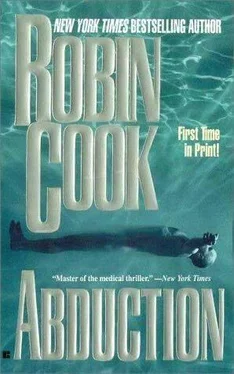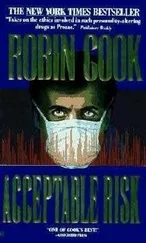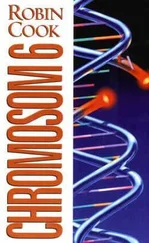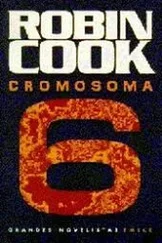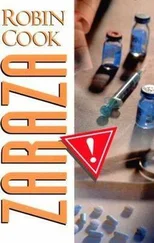Robin Cook - Abduction
Здесь есть возможность читать онлайн «Robin Cook - Abduction» весь текст электронной книги совершенно бесплатно (целиком полную версию без сокращений). В некоторых случаях можно слушать аудио, скачать через торрент в формате fb2 и присутствует краткое содержание. Жанр: Триллер, на английском языке. Описание произведения, (предисловие) а так же отзывы посетителей доступны на портале библиотеки ЛибКат.
- Название:Abduction
- Автор:
- Жанр:
- Год:неизвестен
- ISBN:нет данных
- Рейтинг книги:5 / 5. Голосов: 1
-
Избранное:Добавить в избранное
- Отзывы:
-
Ваша оценка:
- 100
- 1
- 2
- 3
- 4
- 5
Abduction: краткое содержание, описание и аннотация
Предлагаем к чтению аннотацию, описание, краткое содержание или предисловие (зависит от того, что написал сам автор книги «Abduction»). Если вы не нашли необходимую информацию о книге — напишите в комментариях, мы постараемся отыскать её.
Abduction — читать онлайн бесплатно полную книгу (весь текст) целиком
Ниже представлен текст книги, разбитый по страницам. Система сохранения места последней прочитанной страницы, позволяет с удобством читать онлайн бесплатно книгу «Abduction», без необходимости каждый раз заново искать на чём Вы остановились. Поставьте закладку, и сможете в любой момент перейти на страницу, на которой закончили чтение.
Интервал:
Закладка:
“What actually did we witness back there?” Suzanne asked.
“The death of Reesta’s current body,” Arak said. He sat back and began to relax. He was unaccustomed to the stress of being out in public with such a large, uninitiated group of secondary humans.
“Where did the body go?” Richard asked.
“Back into the molten asthenosphere,” Arak said.
“And what about his essence?” Perry asked.
Arak paused as if he were searching for words. “It’s difficult to explain these things, but I suppose you’ll get the idea if I say his memory and personality imprint was downloaded into our integrated informational center.”
“Holy shit,” Michael exclaimed. “Look down there in front of that building! It’s a goddamned ’Vette!”
Despite everyone’s intense interest in Arak’s explanation, they couldn’t help but respond to Michael’s outburst and follow his pointing finger. What they saw was a barnacle-encrusted vintage Chevrolet Corvette on a basalt dais in front of a building that appeared like a haphazard pile of children’s blocks.
“What’s a ’Vette doing down here?” Michael asked as they zipped past. “It’s a sixty-two,” he continued. “I had one just like it but in green.”
“That building is our Earth Surface Museum,” Arak explained. “The automobile is the one object that we feel currently symbolizes your culture.”
“It’s in sorry shape,” Michael said. He sat back down.
“Obviously,” Arak said. “It had spent a good deal of time underwater before we salvaged it. But getting back to Perry’s question. When the worker clone started the death sequence, Reesta’s entire mind in terms of memory, personality, emotions, self-awareness, and even his unique way of thinking was extracted and stored en masse available for total recall.”
The secondary humans stared at Arak in stunned silence.
“Not only can Reesta’s essence be recalled,” Arak continued. “He can be consulted and even chatted with through your wrist communicator prior to his recall. Or better yet, he can be not only communicated with but viewed in his last body configuration via the media center in each of your quarters. Central Information creates a virtual image in conjunction with whatever conversation you are having.”
“What if someone dies before they get to that download machine?” Richard asked.
“It doesn’t happen,” Arak said. “Death is a planned exercise in Interterra.”
“This is all too much,” Perry said. “What you are telling us is so far from believability that for the moment I don’t even know what to ask.”
“I’m not surprised,” Arak said. “That’s exactly why Sufa and I decided to start showing you things rather than just telling you about them.”
“I have a hard time believing the mind can be downloaded,” Suzanne said. “Intelligence, memory, and personality are associated with dendritic connections in the human brain. The number is staggering. We’re talking about billions of neurons with up to a thousand connections each.”
“It’s a lot of information,” Arak agreed. “But hardly overpowering by cosmic standards. And you are right that dendritic arrays are important. What our central information does is reproduce the dendritic arrays on a molecular level using isomeric, double-bonded carbon atoms. It’s like a fingerprint, we call it a mindprint.”
“I’m lost,” Perry said.
“Don’t despair,” Arak encouraged. “Remember, this is just the beginning. There will be time for you to put all of this into context. Besides, our upcoming visit to the spawning center will show you what we do with the mindprint.”
“What’s in that Earth Surface Museum we passed?” Donald asked.
Arak hesitated. Donald’s question had interrupted his train of thought.
“I mean, what’s specifically on display?” Donald said. “Other than the water-soaked Corvette.”
“Many different objects,” Arak said vaguely. “A cross-section of things representing secondary human history and culture.”
“Where have they come from?” Donald asked.
“Mostly from the ocean floor,” Arak said. “Besides maritime tragedies and war, you people have been progressively and foolishly using the ocean as your garbage dump. You’d be surprised what refuse says about a culture.”
“I’d like to visit there,” Donald said.
Arak shrugged. “As you wish,” he said. “You’re the first visitor to voice such a request. Considering the wonders of Interterra that are now available to you, I’m surprised you are interested. Certainly there’s nothing in there that you are not already entirely familiar with.”
“Everybody’s different,” Donald said laconically.
A few minutes later the air taxi deposited the group at the front steps of the spawning center. It was housed in a building that resembled the Parthenon, only it was black. When Perry mentioned the resemblance, Arak told him it was again the other way around, similar to the Greek adaptation of Cerberus, since the Interterran spawning center was many millions of years old.
Like the death center, the structure was sited in a less congested section of the city. Regardless, once the secondary humans appeared, they again attracted a crowd, forcing Arak to be put to the task of maneuvering Richard and Michael inside the door and out of reach of the primary humans’ eagerly outstretched hands.
This interior was the antithesis of the death center’s. It was bright and white like the buildings at the visitors’ palace. The other difference was that many more worker clones were in evidence here, busily scurrying from place to place.
Arak hustled the group into a side room with a vast number of small stainless steel tanks that looked like miniature bioreactors to Suzanne. They were attached to each other by a complicated tangle of piping in what looked like a high-tech assembly line. The air was warm and moist. A number of worker clones were monitoring various gauges and dials.
“This is not the most interesting part,” Arak said. “But we might as well start at the beginning. These tanks hold our ovarian and testicular tissue cultures. Eggs and sperms are randomly selected and their chromosomes are scanned for molecular imperfections and then microsomally shuffled. The re-formed germ cells are then checked before allowing them to fertilize. If anyone would care to take a peek, there’s a view port available.” Arak pointed toward a binocular eyepiece along the assembly line apparatus.
Suzanne was the only one who took him up on the offer. She bent over and peered within. Inside a tiny chamber below the microscope objective she could see an oocyte being penetrated by an active sperm. The process happened rapidly. A moment later the zygote was gone, and two new gametes were injected into the chamber.
“Anybody else?” Arak asked after Suzanne straightened up.
No one moved.
“Okay,” Arak said. “Let’s move along to the gestation room and a more interesting phase.” He led the way down the length of the gamete room to a room the size of several football fields placed end to end. Within the room were numerous rows of shelves supporting countless numbers of clear spheres. Between the rows walked hundreds of worker clones checking each sphere in turn.
“My word!” Suzanne murmured as it dawned on her what she was seeing.
“The replicating zygotes coming from the fertilization process are checked again for chromosomal molecular abnormalities,” Arak explained. “Once they are determined to be free of any imperfection whatsoever, and they have reached the requisite number of cells, they are implanted into a sphere and allowed to develop.”
“Can we walk along the spheres?” Suzanne asked.
Читать дальшеИнтервал:
Закладка:
Похожие книги на «Abduction»
Представляем Вашему вниманию похожие книги на «Abduction» списком для выбора. Мы отобрали схожую по названию и смыслу литературу в надежде предоставить читателям больше вариантов отыскать новые, интересные, ещё непрочитанные произведения.
Обсуждение, отзывы о книге «Abduction» и просто собственные мнения читателей. Оставьте ваши комментарии, напишите, что Вы думаете о произведении, его смысле или главных героях. Укажите что конкретно понравилось, а что нет, и почему Вы так считаете.
